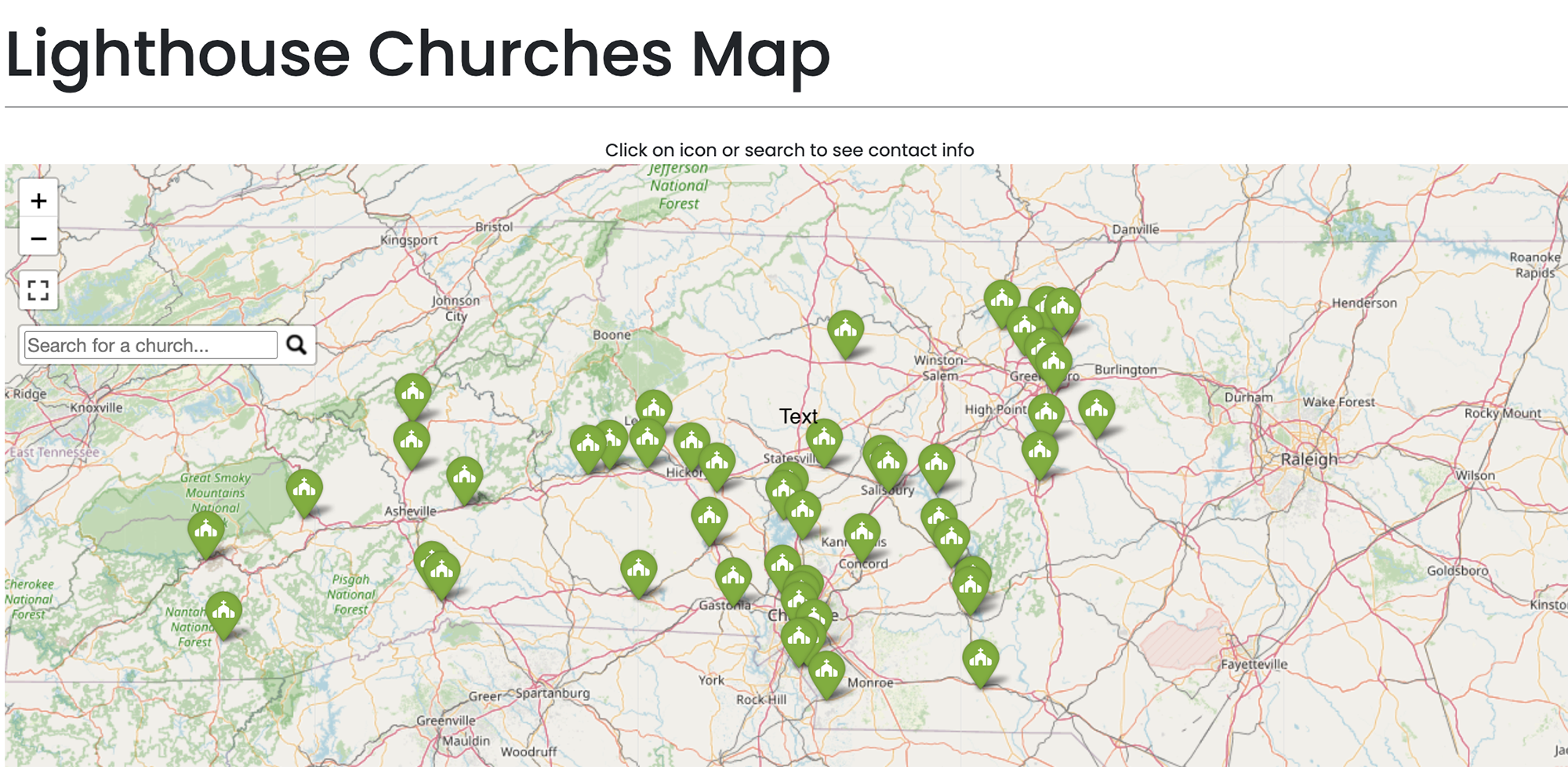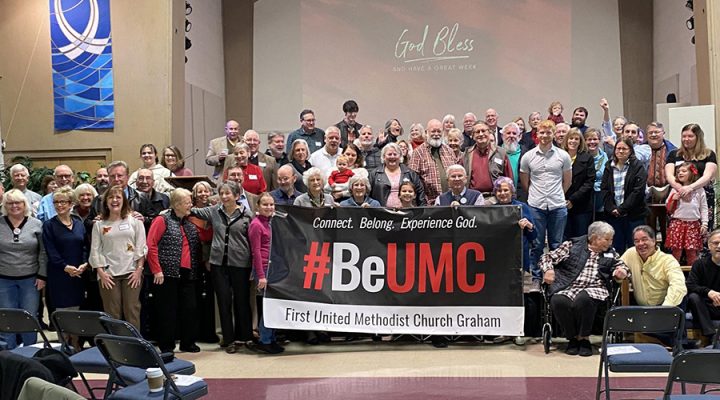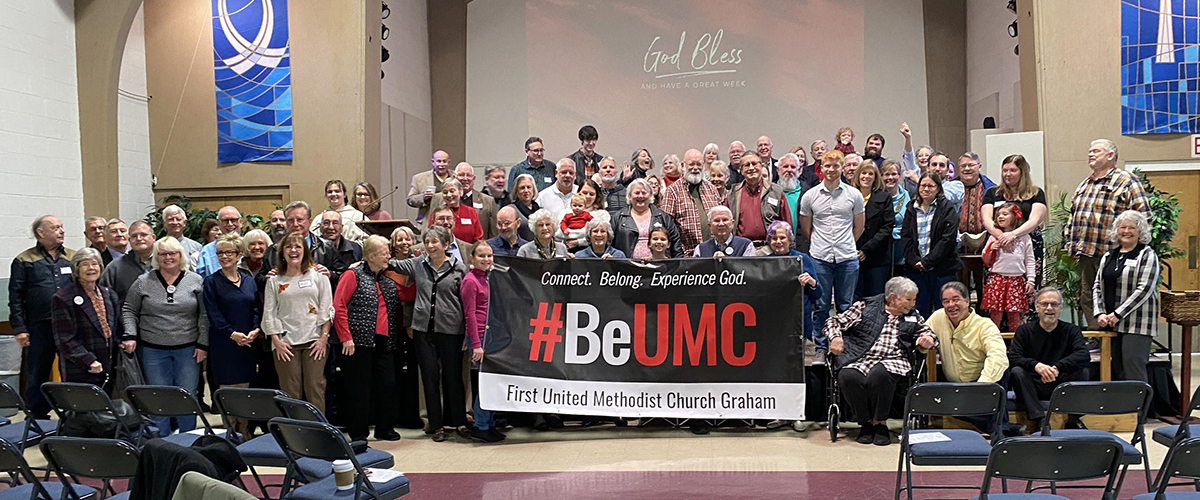Piercing the gloom of multiple churches leaving the United Methodist Church, a light emanating from North Carolina brightens the present and shines on a new future for church members who want to stay in the denomination when their congregations vote to exit.
Lighthouse Congregations is a movement to provide a “safe place” for church members who don’t want to leave the UMC. After the often contentious and hurtful process known as “disaffiliation,” those who want to stay have told church leaders they need to recover spiritually and emotionally from the separation process.
Out of that need, the Lighthouse Congregations solution was born in a new collaboration among United Methodist regions known as annual conferences.

Laura Wittman
Laura Wittman, coordinating pastor for Lighthouse Congregations in the North Carolina Annual Conference, described the idea’s genesis. In November 2022, she and other church leaders were brainstorming about how to minister to members who felt discarded by their disaffiliating congregations. Initially, North Carolina started an online portal it called the UM Collective to gather contact information from those who wanted to remain United Methodist.
Subsequently, two conference staff members assigned to new church development — Tim Catlett in North Carolina and Rob Hutchinson in Western North Carolina — “came up with an idea they didn’t have a name for,” Wittman said. “Tim asked me if I’d be interested, since I’m a church planter, and I said sure. Then Tim said, ‘As of now, you’re assigned to be the coordinating pastor.’ It was just that fast.”
Hutchinson said the idea came from some email conversation he had with Steve Harper, a retired seminary professor in Florida who has been working with Western North Carolina on an online faith community, UMsConnected.org.
“Steve sent me an email about collaboration in general and I sent it on to Tim,” Hutchison explained. “Tim and I kept talking and what resulted was the product of our conversing about what the idea might look like in our respective conferences.”
Lighthouse Congregations’ primary goals are to provide a “safe place” away from the UMC’s current turmoil and to meet the pastoral needs of church members.
“People are really hurting,” Hutchinson said.
North Carolina and Western North Carolina are going about the Lighthouse Congregations project in different ways.
In North Carolina Conference, Lighthouse Congregations are required to commit to:
- Providing worship opportunities, whether online or in person.
- Creating space to learn and grow, through small group gatherings, Bible studies and prayer opportunities.
- Inviting fellow United Methodists into opportunities to serve through hands-on ministries — “anything that involves making a difference and sharing the love of God with others.”
- Offering Communion at least one Sunday a month, but also outside of traditional worship, such as midweek gatherings and in small groups.
- Offering pastoral care such as hospital visits, gatherings at coffee shops, and finding ways to be available to those in need.
In Western North Carolina Conference, Lighthouse Congregations are described as “a United Methodist faith community that will serve as a resting place with people who will care for you while providing a haven of peace and grace. Whether you are an individual or a group of people who have become displaced or churchless because of closing or disaffiliation, Lighthouse Congregations will be there for you during this difficult time.”

While North Carolina lets local churches sign up before training, Western North Carolina has opted first to equip congregations while it also has invited “stay UMC” members to express their interest.
“We’ve had 110 to 115 churches that have gone through training and equipping,” Hutchinson said. “After we train leaders, we ask them to take the idea back to their church council. We want to make sure the whole church is on board with this idea. Right now, we’re at 52 churches that have registered as Lighthouse Congregations, and we have an interactive map with contact information on our conference website to make it easy for members to find them.”
Wittman said her North Carolina Conference is having similar results.
“We have close to 80 Lighthouse Congregations now, and our goal is to have 100 by annual conference time over Father’s Day weekend (June 18),” she said. “It’s been helpful for our churches and our people. It counters negativity to say, ‘This is what we’re doing, and this is what we believe.'”
Word of the collaboration’s success is spreading rapidly. Early adopters of the Lighthouse Congregations model, such as Western Pennsylvania Conference, are using examples from North Carolina to create a version suitable to their own contexts.
“It’s been crazy!” Wittman laughed about the initiative’s momentum. “We’ve had calls from the Tennessee-Western Kentucky Conference, Kentucky, Ohio, and Texas.”
Hutchinson echoed Wittman’s enthusiasm.
“The coolest thing that’s happened is the energy among the churches that have chosen to pursue this,” he said. “We see it on social media. Folks are looking for a safe place to be while they figure out what’s next (in their religious life).”
Cynthia Astle is a veteran communicator who has reported on The United Methodist Church at all levels for 35 years, she serves as editor of United Methodist Insight, an online journal she founded in 2011.
Related articles:
A Baptist’s guide to disaffiliation in other Christian traditions | Analysis by Mallory Challis and Mark Wingfield


